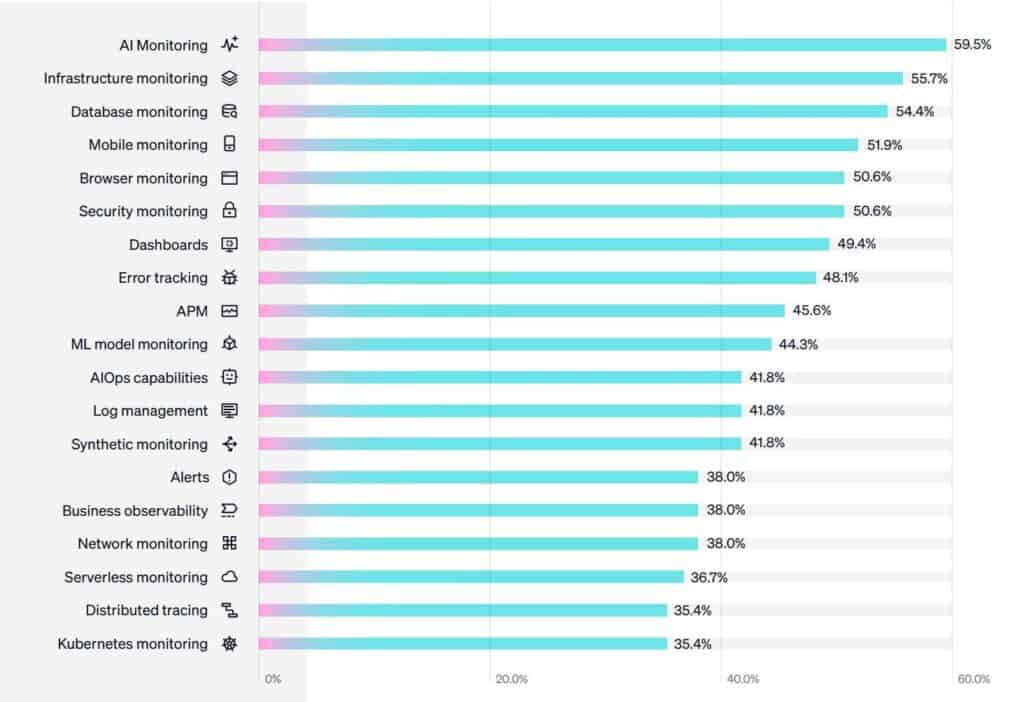A recent report by New Relic, titled State of Observability for Media and Entertainment, reveals that 35% of industry professionals view observability as essential for driving artificial intelligence (AI) adoption. The findings underline the growing importance of observability tools in enhancing operational efficiency and customer experience within this dynamic sector.

Source: 2024 State of Observability for Media and Entertainment, New Relic
New Relic chief technical strategist, Nic benders commented, “Media and entertainment organizations rely on observability to keep content streaming and audiences engaged. They face the burden of maintaining perfect uptime and reliability to support positive viewing experiences amidst often convoluted tech stacks.” The report indicates that strategic investments in observability yield an impressive 296% return on investment (ROI), showcasing its value in a competitive landscape.
In the Asia Pacific region, where consumer demand for high-quality digital content is rapidly increasing, Simon Lee, senior vice president and managing director for Asia Pacific and Japan at New Relic, emphasised the need for a comprehensive view of operations. “Media and entertainment companies need a single platform to ensure uninterrupted user experiences, particularly during key events.”
AI and observability: A symbiotic relationship
The report highlights AI monitoring as the most widely used observability capability, adopted by 60% of respondents—more than any other industry. AI is increasingly viewed as a core driver of observability, with 35% of media and entertainment professionals acknowledging its role in enhancing decision-making and operational efficiencies.
More than a third (35%) of respondents believe that AI-assisted generation of runbooks would significantly improve observability practices, followed closely by AI-assisted remediation actions (33%) and automatic root cause analysis (32%).
Challenges in outage detection
Despite the potential of observability tools, the media and entertainment sector lags behind others in outage detection. The report revealed that only 43% of organisations use observability tools to identify software interruptions, relying instead on incident tickets and manual processes. This has resulted in a median mean-time-to-detection (MTTD) of 56 minutes—51% higher than the median across all industries.
With the sector experiencing the highest median hourly outage cost of $2.2 million, there is a critical need for improved incident response strategies to mitigate financial losses and protect brand reputation.
The path forward
While only 20% of media and entertainment organisations have achieved full-stack observability—lower than the 25% industry average—there is a clear push towards adopting integrated platforms that connect IT performance data directly to business outcomes. An overwhelming 56% of professionals favour a single observability platform, although just 27% plan to consolidate tools in the coming year.
As the media and entertainment sector embraces observability, the focus will be on harnessing AI capabilities to drive efficiency and enhance user experiences, ensuring organisations remain competitive in a fast-evolving digital landscape.



